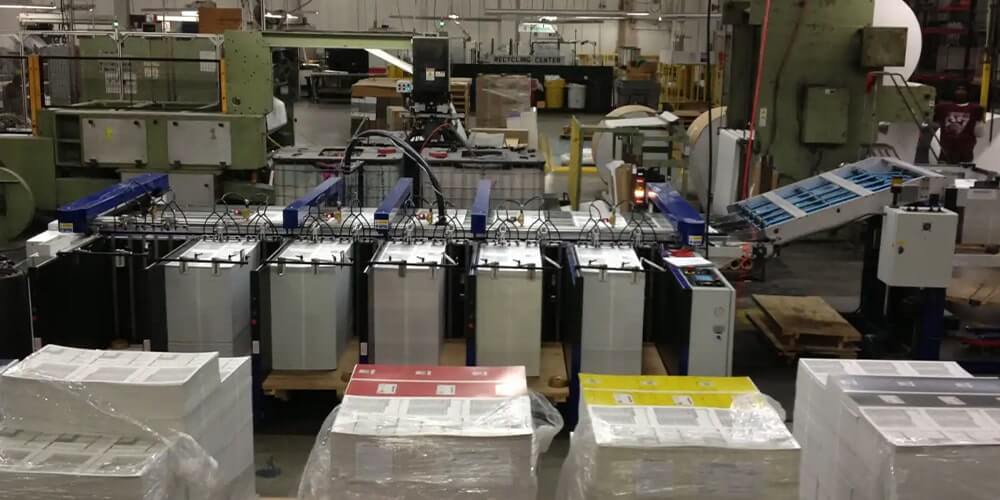
A collator is a precision-engineered machine. It is designed to gather, arrange, and stack sheets or other materials in a fixed sequence for downstream processing. Building one not only demands advanced engineering capability but also precisely matched components. It also requires full compliance with UK machinery safety regulations outlined by GOV.UK or BSI. These laws are also set out by the Health and Safety Executive (HSE) and CE/UKCA marking requirements.
When considering how to build a collator, businesses must grasp the technical complexity involved. If precision, integration, and compliance are not met, it can cause misfeeds, alignment issues, or costly downtime. In production environments, speed and accuracy are instrumental. The performance of collators directly influences operational efficiency and helps manage costs.
This guide explains how collators function and the components required for their construction. It also looks at the key factors that help decide if you should build in-house or partner with a reliable UK collator manufacturer.
A collator works through a series of carefully synchronised mechanical and control systems.
Collators come in horizontal and vertical configurations. Horizontal machines work well for large or heavy substrates and offer excellent stability. Vertical designs, however, help save floor space in tight facilities.
Feeding methods vary:
For special needs, like unique sheet sizes or tough materials, custom collators can be made to fit with other systems. These include binding units, wrapping machines, or mail fulfilment lines. This setup ensures efficient and accurate collation at scale.
A high-performance collator works by seamlessly combining mechanical, electrical, and control systems. Every component should be built to fit the required specs. This guarantees smooth performance and dependable long-term use.
The core elements include:
Designing, sourcing, and integrating these elements demands advanced engineering expertise and strict adherence to British Standards for machinery design.
Correct specification from the outset helps:
Creating a collator is a detailed process. It needs good technical skills, exact matching of parts, and strict follow-through on UK safety regulations.
The three most common challenges include:
Overcoming these challenges usually requires the resources and methods found in specialist manufacturing. This applies to our custom collator production, for example.
Before starting an in-house collator build, check that the design meets both current and future production needs. The following factors should guide your decision-making.
Designing a collator from the ground up is rarely the fastest or most cost-efficient route. In many cases, other options can provide similar performance but with less risk and quicker lead times.
A modular build lets businesses begin with a small setup. They can then expand capacity as demand increases, without needing to replace the whole machine.
Want to achieve near-new performance at a lower capital cost? Upgrade an old collator with new controls, precise feed systems, and better safety features.
Teaming up with a UK specialist gives you reliable designs, ensures parts work well together, and offers ongoing support. Our custom collators can be set up for specific production needs. They also guarantee complete regulatory compliance.
Creating a collator requires careful engineering, compatible parts, and adherence to UKCA and CE rules.
Understanding how to build a collator enables businesses to:
For most operations, working with a trusted UK manufacturer is the most reliable way to achieve lasting performance. Col-Tec creates Signature and Smart collators. Our specialists focus on accuracy, durability, and smooth integration. This applies to our modular systems and bespoke builds. Each machine comes with professional installation, operator training, and ongoing maintenance.
Call +44 ( 0 ) 1425 627755 or arrange a consultation and secure a high-performance collating solution for your business.
Recent Posts